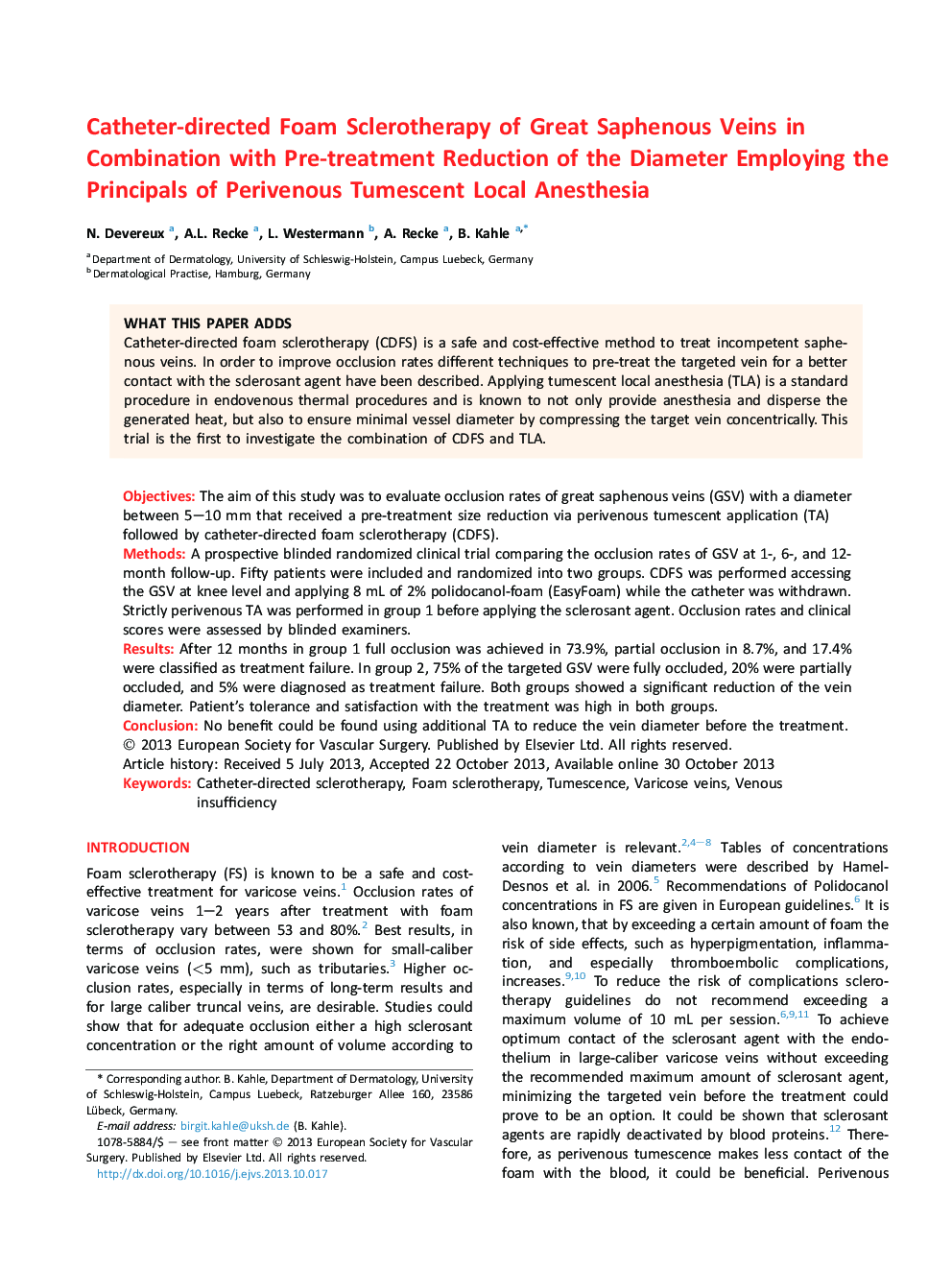| Article ID | Journal | Published Year | Pages | File Type |
|---|---|---|---|---|
| 5958519 | European Journal of Vascular and Endovascular Surgery | 2014 | 9 Pages |
ObjectivesThe aim of this study was to evaluate occlusion rates of great saphenous veins (GSV) with a diameter between 5-10Â mm that received a pre-treatment size reduction via perivenous tumescent application (TA) followed by catheter-directed foam sclerotherapy (CDFS).MethodsA prospective blinded randomized clinical trial comparing the occlusion rates of GSV at 1-, 6-, and 12-month follow-up. Fifty patients were included and randomized into two groups. CDFS was performed accessing the GSV at knee level and applying 8Â mL of 2% polidocanol-foam (EasyFoam) while the catheter was withdrawn. Strictly perivenous TA was performed in group 1 before applying the sclerosant agent. Occlusion rates and clinical scores were assessed by blinded examiners.ResultsAfter 12 months in group 1 full occlusion was achieved in 73.9%, partial occlusion in 8.7%, and 17.4% were classified as treatment failure. In group 2, 75% of the targeted GSV were fully occluded, 20% were partially occluded, and 5% were diagnosed as treatment failure. Both groups showed a significant reduction of the vein diameter. Patient's tolerance and satisfaction with the treatment was high in both groups.ConclusionNo benefit could be found using additional TA to reduce the vein diameter before the treatment.
